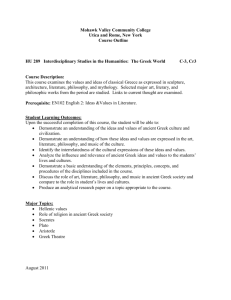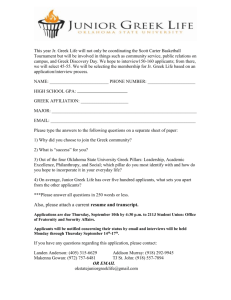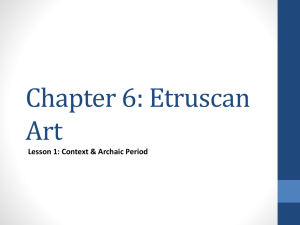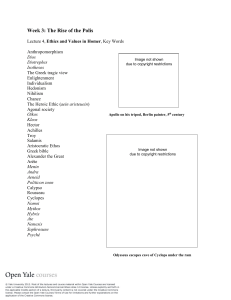Etruscan Art—“The Happy Etruscans”
advertisement
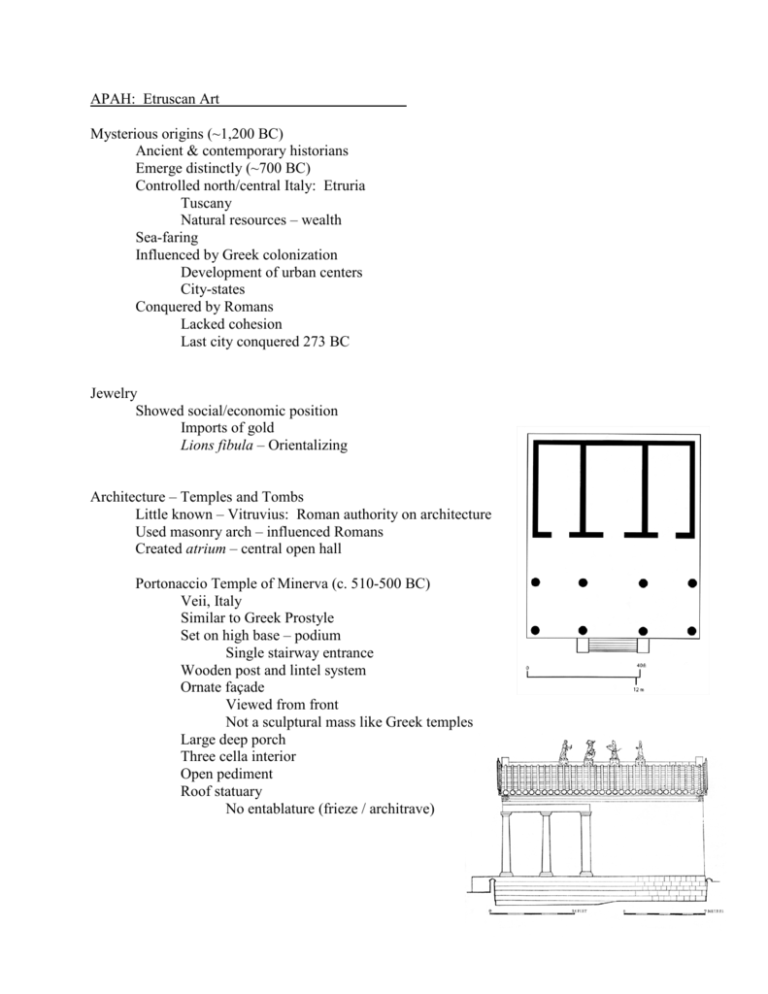
APAH: Etruscan Art Mysterious origins (~1,200 BC) Ancient & contemporary historians Emerge distinctly (~700 BC) Controlled north/central Italy: Etruria Tuscany Natural resources – wealth Sea-faring Influenced by Greek colonization Development of urban centers City-states Conquered by Romans Lacked cohesion Last city conquered 273 BC Jewelry Showed social/economic position Imports of gold Lions fibula – Orientalizing Architecture – Temples and Tombs Little known – Vitruvius: Roman authority on architecture Used masonry arch – influenced Romans Created atrium – central open hall Portonaccio Temple of Minerva (c. 510-500 BC) Veii, Italy Similar to Greek Prostyle Set on high base – podium Single stairway entrance Wooden post and lintel system Ornate façade Viewed from front Not a sculptural mass like Greek temples Large deep porch Three cella interior Open pediment Roof statuary No entablature (frieze / architrave) Cemeteries (necropolises) Richly decorated interiors Joie de vive Dance, feasts, music Built outside city Orderly arrangement Tumulus – domed burial mound Above/below ground Most common Rectangular interior Aristocratic society Elaborate funerary rituals Dining and dancing – celebratory not somber Burial with rich goods Greek pottery Showed social status – reinforced social hierarchy Painting Murals in tombs Tomb of the Triclinium (c. 470 BC) Lively, active, spirited Musicians and dancing for entertainment Banqueting Funeral games – athletic competition Bright colors Elites recline on couches as couples Gender still defined by skin color Celebration of the transition to afterlife Tomb of the Leopards Woman of the Velcha Family More serene Contact with Hellenistic world Sculpture Cinerary urns Disposal of ashes Individuality of the deceased Etruscan Couple Sarcophagus (c. 520 BC) Loving couple Greeks never show couples Sharing banquet that continues after death Specific individuals Relaxed (compare to Menkare and Khamerernebty) Terra cotta Apollo of Veii (c. 510-500 BC) Architectural temple sculpture Ridgepole Master sculptor Vulca Greek archaic elements Archaic smile Etruscan elements Lack of proportion and idealization Strength, energy Clay sculpting – quick, additive Enacts scene from Greek mythology Story of Heracles Mars of Todi Orator Clear Greek influence (classical period) Exaggerated Greek pose Unbalanced Odd liveliness








